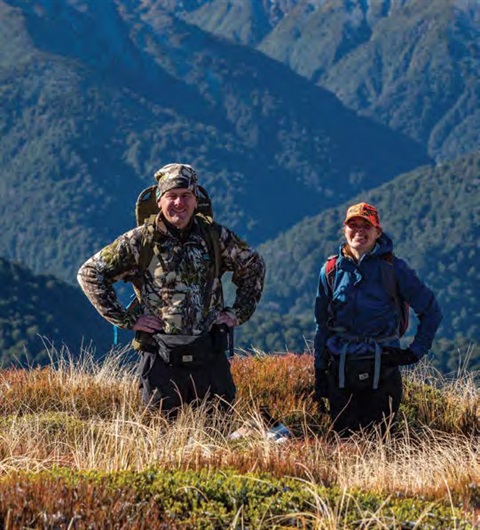Guardians of Ruahine: Inside the Kiwi Rescue
Published on 25 June 2024

Ruahine Kiwi is a conservation project with the huge goal of making the Ruahine Range kiwi friendly, and to get there the team on the ground take mighty steps each day.
A team of eight have developed and maintained trap lines covering over 23,000 hectares of the Southern Ruahine since the project began in 2021, with the intrepid trappers targeting mustelids (stoats, weasles and ferrets) and other pests that threaten our native species.
Ian Rasmussen, Ruahine Kiwi Project Coordinator, says they are working towards returning North Island eastern brown kiwi to the area, “so we need to have very low numbers of mustelids detected before we are able to release any kiwi.”
With a predator controlled environment and improved forest health, it is hoped that other species such as whio, native snails, and long-tailed bats will also thrive. The project is managed by Environment Network Manawatū through a collaboration between Manawatū River Source to Sea and Te Kaūru Eastern Manawatū River Hapū Collective (Te Kaūru).
Te Kaūru looks after the trapping work on the eastern side of the ranges, inland from Norsewood and Raniera Hauiti and Arapera Paewai are the project coordinators for that area.
“It’s about revitalising our maunga back to how it used to be,” says Raniera, “getting it back and getting rid of the paru paru, all the pests, in order to bring back the main goal of kiwi.”
Ian says funding received through the Department of Conservation Jobs for Nature initiative has provided training for the wide-spread team.
“They have gained valuable skills and working outdoors is great and something the team thrives on. We always get to eat our lunch with an awesome view.” The dream is to return kiwi to the area by 2026.
The mahi is progressing really well, it’s an exciting project to be a part of, and we feel good that we are helping out such an important taonga.”
The project has allies, receiving help from external agencies and groups, neighbouring predator control projects in the area and volunteers. The New Zealand Air Force lent its muscle, dropping 120 traps to the project area and Ryman Healthcare residents got on board, building over 1000 traps.
With Jobs for Nature Funding concluding in June 2024 the project is now looking for other funding, donations and volunteer support to ensure that it can reach its goal of kiwi reintroduction by 2026, and estalish and maintain a thriving population far beyond that.
Community involvement has been a focus and it is hoped the project will increase public awareness of how having an active role in improving the environment can achieve positive outcomes.
You can donate to the work of the project or get involved through volunteering.
You can also donate via a Givealittle page set up by Jennian Homes Manawatu to support the project.